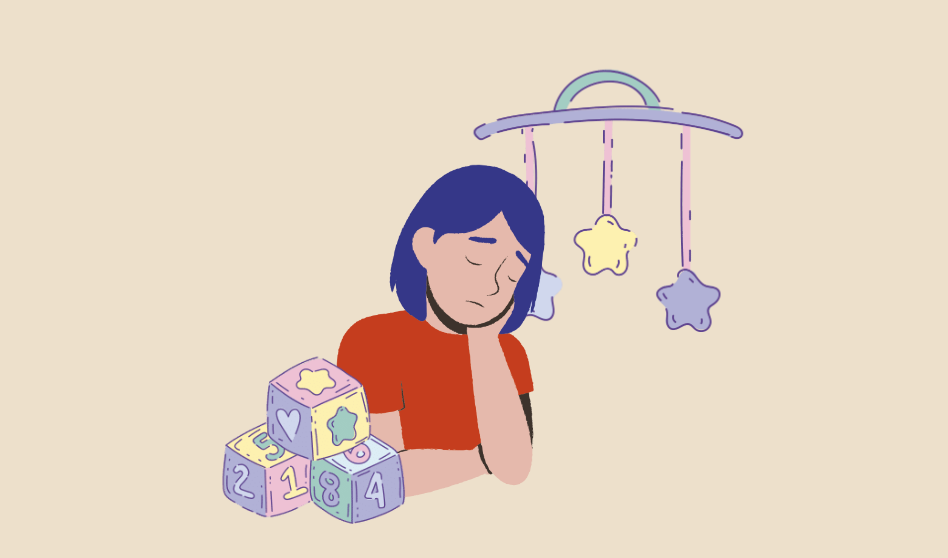Defining Success With Perfectionism
Perfectionism, overachieving, high standards, often with costs to your relationships and self-confidence. Does this sound like you? Can personal...

Skin picking, hair pulling, cheek or nail biting...What are BFRBs and how are they treated?
Body-focused repetitive behaviors (BFRBs) encompass a range of repetitive self-grooming actions, such as biting, pulling, picking, or scraping one's own hair, skin, lips, cheeks, or nails. These self-grooming actions can result in physical harm to the body and often many attempts to stop or reduce the behavior are made. Two forms of BFRBs which you may have heard of before are Trichotillomania (hair pulling) and Excoriation Disorder (skin picking).
According to research, the triggers for BFRBs can stem from the desire to enhance or fix perceived flaws in one's appearance, as well as using these behaviors as a means of coping with intense emotions. According to the TLC Foundation for Body-Focused Repetitive Behaviors, it's estimated 3% of people have BFRBs and common picking or pulling locations can include eyebrows, head, pubic area, face, chest, shoulders, lips, and nails.
Though these behaviors do cause harm to one's body, they are NOT considered self-harm. As opposed to self-harm behaviors, the purpose in BFRBs is not to cause damage but to regulate or soothe oneself. Physical damage is not an intended consequence.
BFRBs can be done in a purposeful way ("focused") or in an automatic or unconscious way ("unfocused").
These are deliberate, conscious behaviors where the person is fully aware that they are engaging in the behavior. Focused BFRBs typically happen when a person feels a specific urge to act out the behavior, and they are often more intentional in nature. For example:
Hair-pulling (Trichotillomania): A person might pull out hairs intentionally, either because of the sensation or to relieve tension.
Skin-picking (Excoriation): Someone might intentionally pick at their skin, often focusing on imperfections, blemishes, or scabs.
In focused BFRBs, the individual has more control over the behavior, although it can still be difficult to stop once the urge kicks in.
In contrast, unfocused BFRBs are more automatic or unconscious. The individual may not realize they're engaging in the behavior until they've already done it. These behaviors tend to happen during moments of stress, boredom, or daydreaming, and they often occur without the person’s active awareness or intention. Examples of unfocused BFRBs include:
Nail-biting: Someone might bite their nails without thinking about it, especially when anxious or distracted.
Cheek or lip biting: A person might bite the inside of their cheek or lip absentmindedly when focused on something else.
Skin picking:
Using sense of touch to pick at or squeeze while doing another behaviorUnfocused BFRBs often happen during down time or in reaction to intense emotions, but people tend to be less aware of or purposeful in doing them than focused BFRBs.
In therapy, individuals can learn how to identify patterns and triggers in their BFRB, and use ways to manage their emotions that help them notice when they're upset without reacting right away.
BFRBs are considered chronic, meaning that they tend to wax and wane over the lifespan. Its not uncommon for BFRBs and other mental health conditions to flare up during times of high stress, even “good” stress like vacation or a promotion!
Therapy for BFRBs includes different aspects of Cognitive Behavioral Therapy (CBT), Acceptance and Commitment Therapy (ACT), Dialectical Behavior Therapy (DBT), Habit Reversal Training (HRT), and the use of Comprehensive Behavioral Treatment (COMb). All of these combined are known as IBT, or Integrative Behavioral Therapy.
The goal of therapy is to help individuals become more aware of when and why they engage in the behavior, so they can gain control over it. Here's how this can be done:
One of the first steps in IBT is having the individual track their behaviors. This involves keeping a detailed journal or log to record occurrences of the BFRB (such as hair-pulling, skin-picking, etc.). The journal typically includes:
When the behavior occurs (time of day, frequency)
Where it happens (in certain settings, situations, or environments)
What the person is doing at the time (activities, thoughts, feelings)
How they feel emotionally and physically (stress levels, anxiety, boredom, etc.)
What was happening right before the behavior (antecedents)
By tracking these details, individuals can begin to identify specific patterns that consistently appear before, during, or after the behavior, also identifying the needs that are being met by the behavior.
This is a key component in IBT, where the therapist works with the individual to identify the function of the behavior. The purpose of this step is to determine why the individual engages in the BFRB. Triggers can be grouped into:
Internal triggers: These may be emotions (e.g., anxiety, frustration, boredom), physical sensations (itchiness, tension), or thoughts (negative self-talk, stress).
External triggers: These might involve certain environments (e.g., at work, social settings), specific people, or situations (e.g., when stressed, watching TV, or reading).
By understanding the function of the behavior (e.g., tension relief, distraction, sensory feedback), both the therapist and client can work together to develop strategies to address the root causes.
Cognitive restructuring can help identify negative or distorted thoughts that contribute to the behavior. For example, someone might engage in a BFRB because of feelings of worthlessness or fear. Identifying these thoughts allows the therapist to help reframe them, which reduces the likelihood of turning to the behavior.
Behavioral experiments can also be used to test ideas about what causes certain reactions, helping the client experiment with alternative behaviors or coping methods.
Mindfulness techniques (allowing us to be present in the moment, without judgement) can help the individual develop a greater sense of awareness around their behaviors. Practicing mindfulness helps to notice urges, feelings, or thoughts before a BFRB happens, so it can be stopped earlier. This can show what triggers it, like stress or physical sensations in the body.
One great additional awareness resource is the Habit Aware bracelet, which is programmed to monitor for a vibrate when certain movement patterns are triggered by the arm. (https://habitaware.com/)
With the help of the therapist, individuals can identify situations that increase the likelihood of engaging in the BFRB. These could be moments of high stress, particular social interactions, or specific environments. Recognizing these moments allows the individual to anticipate and prepare for them.
In some cases, modifying the environment or limiting exposure to triggers can help break the cycle of the behavior. For example, changing where work is done, removing tweezers from the bathroom, or wearing a hat.
By combining these strategies, IBT helps individuals pinpoint the patterns and triggers that drive their BFRBs, and through this understanding, they can develop more effective ways to manage and reduce these behaviors
Therapy can be extremely helpful, rather you are just becoming aware of your BFRB behaviors, or if you have been aware of them and attempts to stop and even previous attempts at talk therapy were not helpful. Often, getting the right type of therapy is key, and having a guide along on the journey with you can help with accountability and motivation. Therapy for BFRBs helps to:
Understand & modify connection between thoughts, emotions, and actions
Identify and increase awareness of triggers and early signs of BFRB and implement healthier replacements
Integrate mindfulness, emotion regulation, & distress tolerance to help manage BFRBs by developing healthy coping mechanisms and fostering emotional resilience, helping to navigate negative emotions without resorting to harmful behaviors.
One major differentiating factor between OCD and BFRBs is that there are not usually obsessions with BFRBs, and the BFRB behavior is actually serving as self-regulating. In OCD, there are obsessions followed by attempts to get rid of thoughts, feelings, images, or sensation, due to a feared consequence or outcome. People with BFRBs often find comfort in their pulling or picking behaviors and may be reluctant to stop, while individuals with OCD are distressed by their compulsions but feel an overwhelming urge to carry them out.
You may have to speak to a few therapists before finding the right one for YOU. Be sure to ask your therapist:
Support groups are also a GREAT option, and are usually low cost or free
For more on BFRBs: https://www.bfrb.org/
A fantastic book I often use with and recommend to clients is Dr. Deibler and Dr. Reinardy’s THE BFRB RECOVERY WORKBOOK. https://a.co/d/bKDJ4nm
If you are interested in learning more or want to schedule a free 15 minute phone consult, reach out to Ashley today!
Sources for this blog include bfrb.org and information from Dr. Marla Deibler and Dr. Renae Reinardy.

Perfectionism, overachieving, high standards, often with costs to your relationships and self-confidence. Does this sound like you? Can personal...

Welcoming a new baby into your life is often a time of joy and excitement, but for some parents, it can also trigger feelings of overwhelming anxiety...

Many people come into therapy looking for relief from their thoughts. They might say, “I just want to stop overthinking,” or “I want the anxiety to...